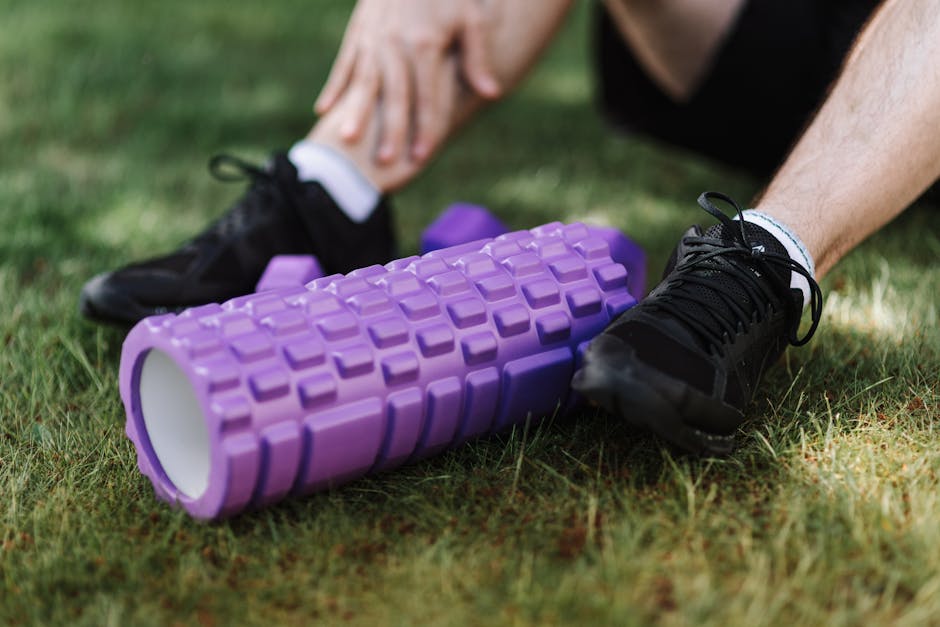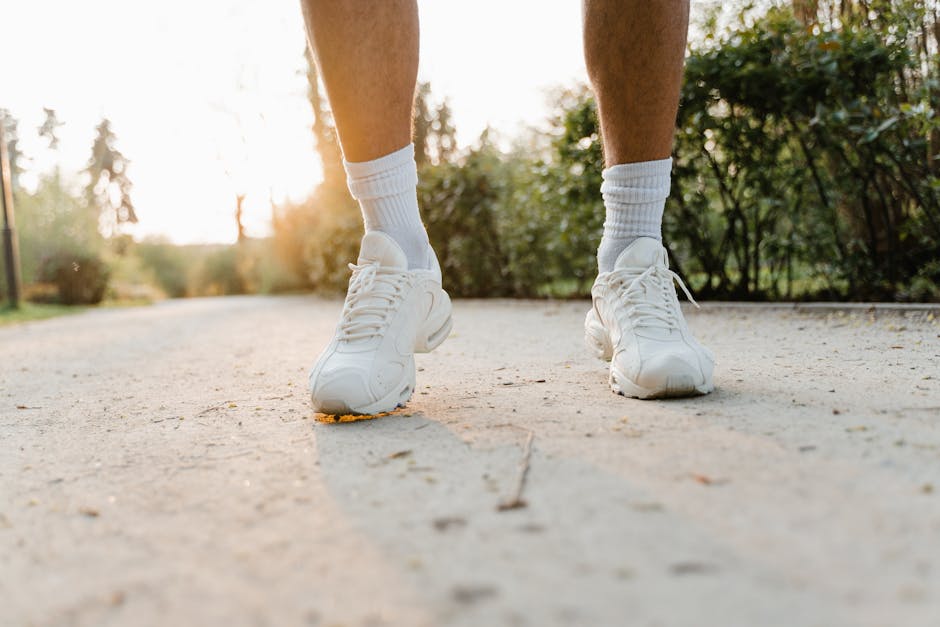Exercises to Strengthen Knees: A Comprehensive Guide
Our knees are integral to almost every movement we make, from walking and running to climbing stairs and squatting. Unfortunately, they’re also one of the most injury-prone areas of the body, especially as we age or engage in high-impact activities. Strengthening the muscles around the knees is crucial for preventing injuries, reducing pain, and improving overall mobility. In this comprehensive guide, we will delve into the world of exercises designed to strengthen knees, exploring different techniques, benefits, and considerations to help you maintain healthy and resilient knees for years to come.
The Anatomy of the Knee

Before we dive into specific exercises, it’s essential to understand the anatomy of the knee joint. The knee is a complex hinge joint that connects the thigh bone (femur) to the shin bone (tibia). It also involves the kneecap (patella) and fibula, along with a network of ligaments, tendons, and cartilage that provide stability and support. The quadriceps muscles at the front of the thigh, hamstrings at the back, and various smaller muscles around the knee all play a role in supporting and moving the joint.
The Importance of Knee Strength

Weakness in the muscles surrounding the knee can lead to a variety of issues, including instability, pain, and susceptibility to injuries such as sprains, strains, and tears. Strengthening these muscles can help improve joint alignment, reduce pressure on the knee, and enhance overall function. Whether you’re recovering from an injury or looking to prevent one, incorporating knee-strengthening exercises into your routine is key to maintaining optimal knee health.
The Best Exercises to Strengthen Knees

There are several types of exercises that target the muscles around the knee, each offering unique benefits and challenges. Here are some of the best exercises to strengthen knees:
1. Quadriceps Strengthening Exercises

The quadriceps muscles are crucial for supporting the knee joint and absorbing impact during activities like walking and jumping. Strengthening these muscles can help improve knee stability and reduce the risk of injuries. Some effective quadriceps exercises include:
– Squats: Stand with your feet shoulder-width apart, bend your knees, and lower your body as if you were sitting back into a chair. Keep your back straight and your knees aligned with your toes. Push through your heels to return to the starting position.- Lunges: Step forward with one leg, bending both knees to lower your body toward the ground. Keep your front knee aligned with your ankle and your back knee hovering just above the floor. Return to the starting position and repeat on the other side.
2. Hamstring Strengthening Exercises
The hamstrings play a critical role in stabilizing the knee and supporting movements like bending and straightening the leg. Strengthening these muscles can help prevent strains and improve overall knee function. Some effective hamstring exercises include:
– Deadlifts: Stand with your feet hip-width apart, holding a barbell or dumbbells in front of your thighs. Hinge at the hips to lower the weights toward the ground, keeping your back straight and your knees slightly bent. Engage your hamstrings and glutes to return to the starting position.- Leg Curls: Lie on your stomach on a leg curl machine, with your legs extended and the padded bar resting just above your ankles. Flex your knees to bring the bar toward your glutes, then slowly return to the starting position.
3. Glute Strengthening Exercises
The glute muscles are often overlooked when it comes to knee health, but they play a crucial role in stabilizing the pelvis and supporting the hips, which in turn affects knee alignment and function. Strengthening the glutes can help improve overall lower body strength and reduce the risk of knee injuries. Some effective glute exercises include:
– Hip Thrusts: Sit on the ground with your upper back resting against a bench, knees bent, and feet flat on the floor. Push through your heels to lift your hips toward the ceiling, engaging your glutes at the top of the movement. Lower back down and repeat.- Clamshells: Lie on your side with your hips and knees bent at a 90-degree angle. Keeping your feet together, lift your top knee toward the ceiling, then lower it back down. Repeat on both sides.
4. Calf Strengthening Exercises
The calf muscles play a crucial role in supporting the ankle and foot, which in turn affects the alignment and stability of the knee joint. Strengthening the calves can help improve balance, reduce strain on the knees, and enhance overall lower body function. Some effective calf exercises include:
– Calf Raises: Stand with your feet hip-width apart, rise up onto the balls of your feet, then lower back down. You can perform calf raises on the ground or on a step to increase the range of motion.- Jump Rope: Jumping rope is a dynamic calf-strengthening exercise that also improves cardiovascular fitness and coordination. Start with both feet jumping together, then progress to alternating feet and double unders for added challenge.
5. Stability and Balance Exercises
Improving stability and balance is crucial for preventing falls and injuries, especially as we age. These exercises can help strengthen the muscles around the knee, improve proprioception (awareness of body position), and enhance overall joint stability. Some effective stability and balance exercises include:
– Single Leg Stands: Stand on one leg, maintaining your balance for 30 seconds to a minute before switching to the other leg. For an added challenge, try closing your eyes or standing on an unstable surface.- Bosu Ball Squats: Stand on a Bosu ball with the flat side down, perform squats while balancing on the unstable surface. This exercise challenges your proprioception and strengthens the muscles around the knees.
Common Misconceptions about Knee Strengthening
There are several misconceptions about knee strengthening exercises that can lead to ineffective or even harmful practices. One common myth is that you should avoid exercises that cause pain in or around the knee. While it’s essential to listen to your body and avoid exercises that exacerbate existing pain, some discomfort or muscle soreness is normal when starting a new exercise routine. It’s crucial to differentiate between muscle soreness and joint pain to ensure you’re targeting the right areas for improvement.
Another misconception is that you need to perform high-impact exercises to strengthen the knees effectively. While activities like running and jumping can help build lower body strength, they can also put excess strain on the knees, especially if performed incorrectly or excessively. Low-impact exercises such as swimming, cycling, and using resistance bands can be equally effective for strengthening the muscles around the knees without causing unnecessary stress on the joints.
FAQs about Knee Strengthening Exercises
1. How often should I perform knee strengthening exercises?
It’s recommended to perform knee strengthening exercises at least 2-3 times per week, allowing for rest days in between to prevent overtraining and promote muscle recovery. Consistency is key when it comes to building strength and stability in the knees, so establishing a regular routine that includes a variety of exercises is essential.
2. Can knee strengthening exercises help prevent injuries?
Yes, strengthening the muscles around the knees can help improve joint stability, reduce pressure on the knee, and enhance overall function, all of which can help prevent injuries. By incorporating a variety of exercises that target different muscle groups, you can create a well-rounded routine that supports knee health and reduces the risk of common injuries.
3. Are knee strengthening exercises suitable for everyone?
While knee strengthening exercises can benefit people of all ages and fitness levels, it’s essential to consult with a healthcare provider or physical therapist before starting a new exercise routine, especially if you have existing knee issues or medical conditions. They can provide personalized recommendations, modifications, and guidance to ensure you’re performing exercises safely and effectively.
To Wrap Things Up
Strengthening the muscles around the knees is crucial for maintaining optimal joint health, preventing injuries, and improving overall mobility. By incorporating a variety of exercises that target the quadriceps, hamstrings, glutes, calves, and stability, you can create a well-rounded routine that supports knee strength and resilience. Remember to listen to your body, start slowly, and gradually increase intensity and volume as your strength improves. With dedication and consistency, you can build a solid foundation for healthy and strong knees that will support you in all your daily activities and fitness pursuits.




